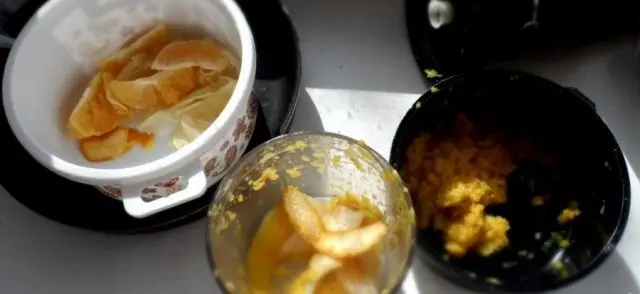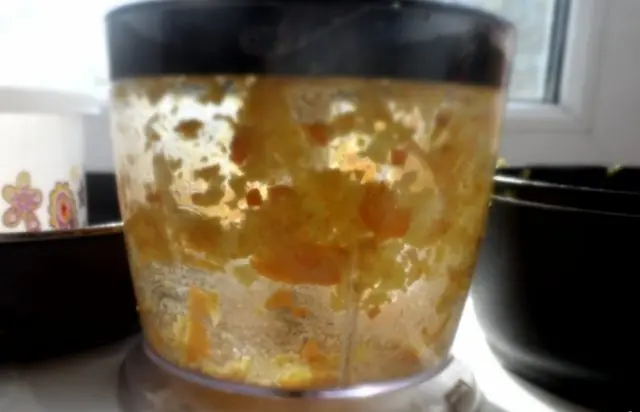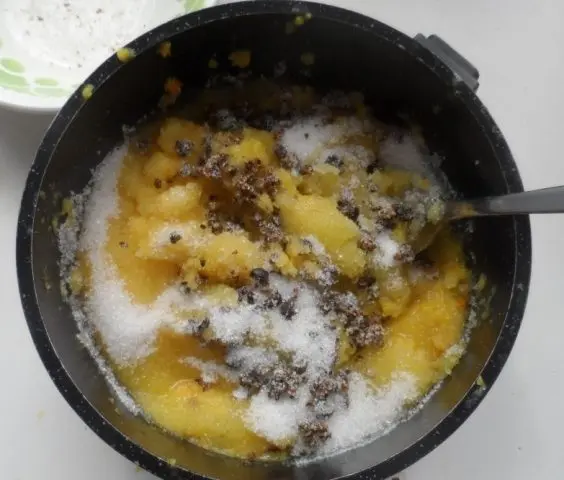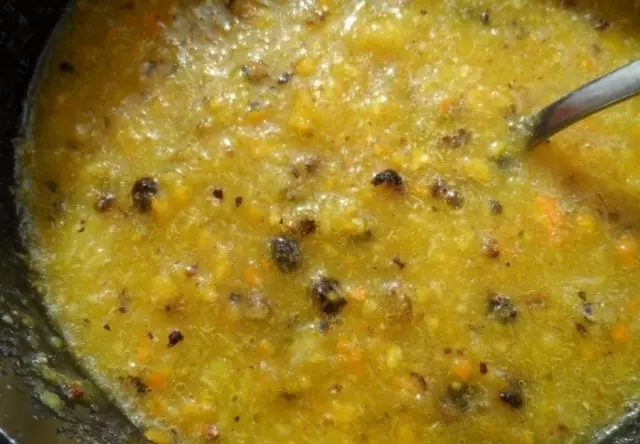Contents
In recent years, the number of diseases from which humanity suffers has increased dramatically, while the effectiveness of traditional medicines, on the contrary, has decreased. Therefore, many people remember the medicinal gifts of nature, rightly believing that they can be, if not a panacea, then a real help in getting rid of many health problems. Coniferous plants, and in particular juniper, have attracted people with their healing properties since ancient times. And juniper jam, for all the poetry and unusualness of its name, is quite capable of providing real help in curing many diseases.
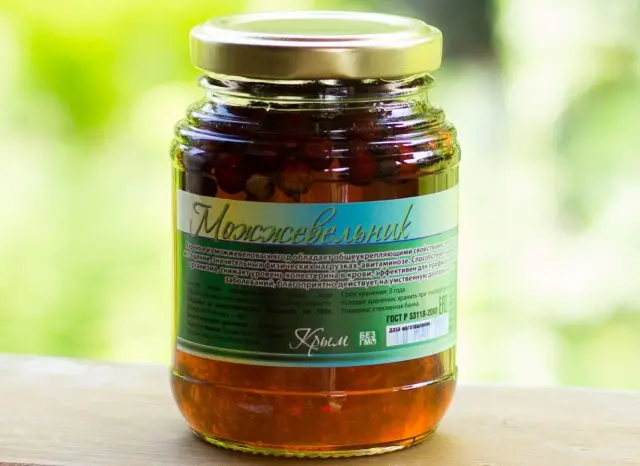
Benefits of juniper jam
By itself, juniper can hardly be called a rare plant. It is ubiquitous in a wide variety of natural areas of the country, and it is very popular to use it for urban landscaping. Plants belong to the genus of evergreen conifers and to the Cypress family. Juniper – the oldest representative of the flora of the Earth, lived on our planet 50 million years ago. And on average, the life of one juniper plant can be from 600 to 2000 years. This is achieved due to the incredible endurance and adaptability of the juniper to the conditions of a constantly changing environment. An important role is played by the rich composition of all parts of the juniper, which allows it to survive in difficult conditions.
People have long noticed the unique properties of all parts of the juniper (bark, branches, needles and fruits) and used them for disinfection, and for treatment, and for household purposes and, of course, for cooking.
In fact, juniper jam is a very conditional and generalizing name for a product that, in its essence and consistency, can more resemble syrup or “honey”. In the classic recipe for jam from juniper cones, the percentage component of the content of this plant is very small. And this is not surprising. After all, juniper has a very powerful power of influence and is used in the same cooking, primarily as a spice. It is added to various dishes in very small quantities, since even its minimum doses can have a significant effect on the human body.
The best known are the bactericidal properties of juniper and, accordingly, jam from it. In addition, its diuretic, biliary and anti-inflammatory properties have long been recognized and widely used in official medicine. Thanks to them, juniper jam can be useful for pyelitis, pyelonephritis, cystitis, prostatitis, diseases of the biliary tract and liver.
Juniper is also able to help with a wide variety of rheumatic diseases, including gout.
The use of juniper jam can help cleanse the blood and release the body of toxins.
Juniper can also be useful for colds. Products based on it enhance separation and thin sputum, therefore they are used in the treatment of broncho-pulmonary diseases.
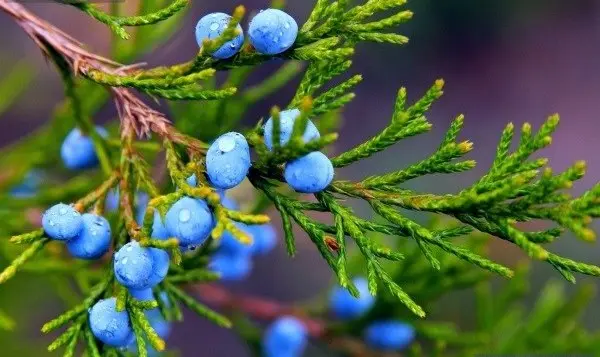
Juniper jam has other additional beneficial properties:
- Reduces blood pressure.
- Reduces pain during menstruation.
- Increases the elasticity of blood vessels.
- Helps to quickly restore the skin with various abrasions, wounds and burns.
- Improves the condition of varicose veins and hemorrhoids.
- Helps with inflammation of the gums.
Finally, both berries and juniper jam are a good way to stimulate appetite, including in children.
juniper jam recipes
As already mentioned, almost all parts of juniper have healing properties: from roots and bark to fruits. It is only necessary to realize that only parts of the common juniper, which is ubiquitous in Our Country, are used for food. Other varieties of this plant, especially the Cossack juniper, are distinguished by poisonous fruits, needles and twigs. Fortunately, common juniper is easy to distinguish from all other varieties. It has exactly 3 seeds inside the berries, and the fruits themselves usually also grow in threes. In fact, it would be more correct to call juniper fruits cones, since it belongs to gymnosperms. But the appearance of ripe fruits is so reminiscent of berries that it can mislead many. It is for this reason that even in the official botanical literature they are often called “cone berries”.
Juniper cones have a rounded shape, up to 6-9 mm in diameter. The surface is quite smooth. The scales are very close to each other, so the bumps cannot open. The color of immature juniper fruits is green, when ripe they acquire a blue-black hue. But maturation occurs over a long period – 2-3 years, therefore, on individual juniper bushes, cones of varying degrees of maturity can usually be observed. Their smell is very specific with a spicy tint, and the taste, although rather sweet, is characterized by sharpness and astringency. Juniper seeds are frankly bitter, so it is necessary to grind the berries when making jam very carefully so as not to damage the seeds and add bitterness to the taste of the finished jam.
Juniper fruits consist of:
- essential oil;
- sugars;
- resins;
- mineral salts;
- acids.
The leaves of the common juniper have an elongated, awl-like shape, pointed at the ends. They are updated every 4 years. Therefore, in winter, the needles of the juniper may turn brown, but in the spring it again acquires a bright green color due to young growth.
Juniper cone jam
Most often in the culinary business, the so-called juniper cones are used.
Juniper jam in its classic form, a step-by-step photo of the manufacture of which can be seen below, is made with the addition of citrus fruits. This has a beneficial effect on the palatability of the future dish, and allows you to get a not so saturated concentration of highly active substances.
For its manufacture will require:
- 1 large sweet orange;
- 1 medium sized lemon;
- 10 juniper cones;
- 400 d Sahara.
For the manufacture of juniper jam, you can use both fresh berries and dried ones. They should be smooth, shiny, brownish-black with a clear blue bloom. At the top there should be a three-beam groove. The flesh is greenish-brown with triangular seeds. Before use, juniper berries are washed, slightly dried and gently rubbed with a wooden rolling pin or spoon so as not to crush the seeds.
Preparation:
- Orange and lemon are thoroughly washed, then scalded with boiling water.
- From both fruits, rub the zest with a fine grater.

- Then the remaining peel is removed and a thick white layer is cut out from the inside.
- The pulp of citrus fruits is cut into pieces of a convenient size, and freed from seeds, which can also bring bitterness with them.
- The peel is cut into small pieces.
- In a convenient deep bowl (or blender bowl), grated zest, peel and pulp of an orange and pitted lemon are combined.

- Grind with a blender into a homogeneous mass.
- Then the resulting mass is placed in a deep frying pan or pan with a thick bottom, mashed juniper berries are added, the amount of sugar required by the recipe is mixed and left to infuse for several hours in the room.

- Then they put the dishes with the future juniper jam on heating, bring to a boil.
- Reduce heat and simmer for about 12-15 minutes.
- Remove juniper jam from heating and cool to normal room temperature.

- These steps are repeated 4 to 6 times until the jam has the desired thickness.
- Juniper jam can be considered ready. It is transferred to a sterilized jar, hermetically sealed and, after cooling, placed in storage.

Very often, wise housewives use the beneficial properties of juniper not to make pure jam from it, but add a few crushed cones to traditional jam from any other fruit or berry. As a result, ready-made desserts not only acquire an additional pleasant aroma and taste, but become capable of exerting the full range of beneficial effects inherent in juniper.
Juniper berry jam with plums and apples
The recipe for juniper jam is popular, which allows you to use the resulting dish not only as a dessert, but also as a sauce or seasoning for meat dishes.
You need:
- 1 kg plums;
- 1 large green apple;
- 50 juniper berries;
- 1 lemon;
- 600 ml of water;
- 1 kg of sugar.
Manufacture:
- The pits are removed from the plums, cut into small pieces.
- Peel the skin off the apple and cut it into thin slices.
- The lemon is scalded with boiling water, the zest is removed from it with a fine grater and the juice is squeezed out of it.
- Squeezed juice is immediately poured over chopped slices of apples so that they do not have time to darken.
- Juniper berries are lightly crushed in a wooden mortar.
- In a saucepan, mix the apple peel, lemon zest and juniper berries.
- Add water, heat to a boil and cook over moderate heat for half an hour.
- Chopped plums and apples are mixed together in a refractory container.
- The broth is ground through a sieve, and the resulting puree is added to the apple-plum mixture.
- The future juniper jam is heated to + 100 ° C, boiled over low heat for 10 minutes.
- Sugar is added and after boiling again, cook for about 20 minutes until relatively thick.
Juniper branch jam
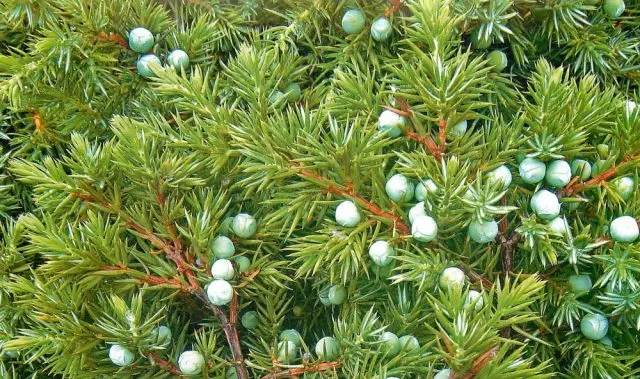
Juniper twigs contain no less nutrients than cone berries. To make delicious and healthy juniper jam from them, you can use the following recipe.
Required:
- about 1 kg of young juniper twigs, which are harvested around mid-May;
- 1 kg of granulated sugar.
Manufacture:
- Juniper twigs are thoroughly washed in cold water, then dried on a cloth towel.
- Then, using a sharp knife, grind them into possibly small pieces.
- In a prepared sterile jar, a layer of juniper twigs is placed on the bottom, sprinkled with a layer of sugar.
- Then again lay out a layer of chopped branches, which are again covered with sugar.
- This is repeated until the jar is full. There should be a layer of sugar on top.
- The jar is covered with a cloth and left at room conditions for 12-24 hours.
- The next day, the contents of the jar are mixed, topped up to the neck with water and the syrup is filtered through several layers of gauze. Wring out.
- Heat the resulting syrup to a boil and cook over very low heat until thickened, stirring all the time.
- The finished juniper jam is laid out in sterile jars and hermetically sealed.
How to take juniper jam
Juniper jam, especially made from young twigs, is a product with a high concentration of nutrients. Therefore, it should not be consumed as a dessert, but rather as a medicine.
Usually use one teaspoon or dessert spoon of juniper jam after meals 2-3 times a day.
Противопоказания
In addition to the obvious benefits, juniper jam can bring harm to human health. It is not recommended to use:
- pregnant women;
- persons with severe hypertension;
- those who suffer from kidney disease;
- with exacerbations of gastric and duodenal ulcers.
Terms and conditions of storage
Juniper cone jam can easily keep its properties in cool conditions without light for a year. Jam from juniper twigs can be stored in such conditions even more – up to two years.
Conclusion
Juniper jam is an original and rare dish that has a pronounced healing effect. It is not difficult to prepare it, you should not just take it exclusively as a dessert and exceed the recommended daily dose of consumption.










